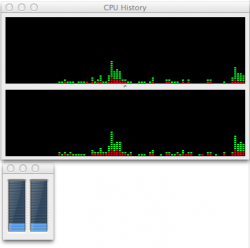I am not a Pro and try to learn in this forum which nMP would be best for me. I can only afford either the 4 or at the most the 6 core and intend to keep it as long as possible. I had previously a Mid 2010 8-core MP sold to finance a new MP.
What I do not understand is the fact that I read that most software will have to be adapted to make use of multicores nMP. This means that with few exceptions most cores remain presently idle. I read that at the present times most of the software actually uses 1 to 2 cores.
Since from the first MP of 2006 to the last "old" MP of 2012 the number of cores increased from 4 to 12! is it possible that Apple built and sold to Pros computers that in most cases had too many unnecessary cores?
The different tests mentioned in this forum, even without the already optimized FCP do show much better results in most cases when nMP with more cores are compared to nMP with less cores. This seems logical since why build and offer more expensive machines if the user has no benefit ?
The feared reduction in the processor speed does not seem to apply as long as the same number of cores is actually working. Only the cache increases.
Therefore I would be very grateful if knowing members help me to understand what seems to be a contradiction between most applications satisfied with 1 or 2 cores and Apple building more and more cores.
Thank you very much in advance!!!
What I do not understand is the fact that I read that most software will have to be adapted to make use of multicores nMP. This means that with few exceptions most cores remain presently idle. I read that at the present times most of the software actually uses 1 to 2 cores.
Since from the first MP of 2006 to the last "old" MP of 2012 the number of cores increased from 4 to 12! is it possible that Apple built and sold to Pros computers that in most cases had too many unnecessary cores?
The different tests mentioned in this forum, even without the already optimized FCP do show much better results in most cases when nMP with more cores are compared to nMP with less cores. This seems logical since why build and offer more expensive machines if the user has no benefit ?
The feared reduction in the processor speed does not seem to apply as long as the same number of cores is actually working. Only the cache increases.
Therefore I would be very grateful if knowing members help me to understand what seems to be a contradiction between most applications satisfied with 1 or 2 cores and Apple building more and more cores.
Thank you very much in advance!!!


